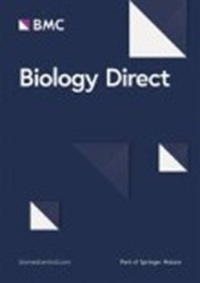miR-214-3p/LRIG1 轴调节膀胱癌中 circLRIG1 的失调和抗转移功能
IF 5.7
2区 生物学
Q1 BIOLOGY
引用次数: 0
摘要
circLRIG1是一种新发现的circRNA,其潜在功能和生物学过程尚未见报道。本研究探讨了 circLRIG1 在膀胱癌发生和发展中的作用及其潜在的分子机制。研究采用了 qRT-PCR、Western 印迹、各种细胞检测和体内模型等技术来研究 mRNA 和蛋白水平、细胞行为、分子相互作用和肿瘤生长。结果显示,在膀胱癌组织和细胞系中,circLRIG1和LRIG1都明显减少。circLRIG1的低表达与患者预后不良有关。过表达 circLRIG1 可抑制膀胱癌细胞的生长、迁移和侵袭,促进细胞凋亡,减少体内肿瘤的生长和转移。重要的是,研究发现circLRIG1能疏导miR-214-3p,增强LRIG1的表达,其过表达还能调节E-cadherin、N-cadherin、Vimentin和LRIG1的蛋白水平。LRIG1 的过表达也有类似的效果。值得注意的是,在膀胱癌组织中,circLRIG1 和 LRIG1 的表达呈正相关。此外,过表达 miR-214-3p 或沉默 LRIG1 可逆转 circLRIG1 的肿瘤抑制作用。研究得出结论,circLRIG1通过海绵状miR-214-3p增强LRIG1的表达,从而抑制膀胱癌的进展,为膀胱癌的早期诊断和治疗提供了一种潜在的策略。本文章由计算机程序翻译,如有差异,请以英文原文为准。
Dysregulation and antimetastatic function of circLRIG1 modulated by miR-214-3p/LRIG1 axis in bladder carcinoma
CircLRIG1, a newly discovered circRNA, has yet to have its potential function and biological processes reported. This study explored the role of circLRIG1 in the development and progression of bladder carcinoma and its potential molecular mechanisms. Techniques such as qRT-PCR, Western blot, various cellular assays, and in vivo models were used to investigate mRNA and protein levels, cell behavior, molecular interactions, and tumor growth. The results showed that both circLRIG1 and LRIG1 were significantly reduced in bladder carcinoma tissues and cell lines. Low circLRIG1 expression was associated with poor patient prognosis. Overexpressing circLRIG1 inhibited bladder carcinoma cell growth, migration, and invasion, promoted apoptosis, and decreased tumor growth and metastasis in vivo. Importantly, circLRIG1 was found to sponge miR-214-3p, enhancing LRIG1 expression, and its overexpression also modulated protein levels of E-cadherin, N-cadherin, Vimentin, and LRIG1. Similar effects were observed with LRIG1 overexpression. Notably, a positive correlation was found between circLRIG1 and LRIG1 expression in bladder carcinoma tissues. Additionally, the tumor-suppressing effect of circLRIG1 was reversed by overexpressing miR-214-3p or silencing LRIG1. The study concludes that circLRIG1 suppresses bladder carcinoma progression by enhancing LRIG1 expression via sponging miR-214-3p, providing a potential strategy for early diagnosis and treatment of bladder carcinoma.
求助全文
通过发布文献求助,成功后即可免费获取论文全文。
去求助
来源期刊

Biology Direct
生物-生物学
CiteScore
6.40
自引率
10.90%
发文量
32
审稿时长
7 months
期刊介绍:
Biology Direct serves the life science research community as an open access, peer-reviewed online journal, providing authors and readers with an alternative to the traditional model of peer review. Biology Direct considers original research articles, hypotheses, comments, discovery notes and reviews in subject areas currently identified as those most conducive to the open review approach, primarily those with a significant non-experimental component.
 求助内容:
求助内容: 应助结果提醒方式:
应助结果提醒方式:


